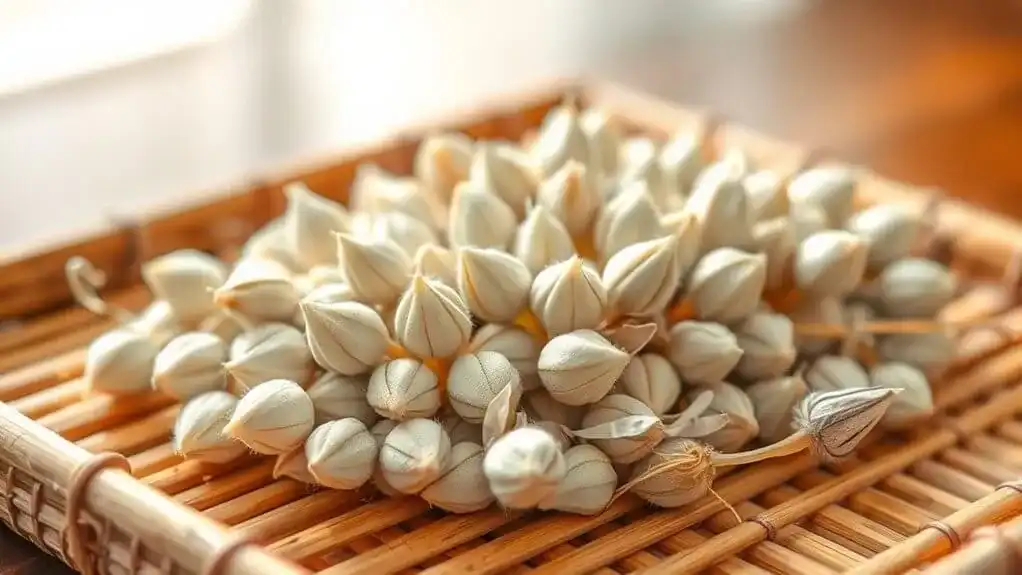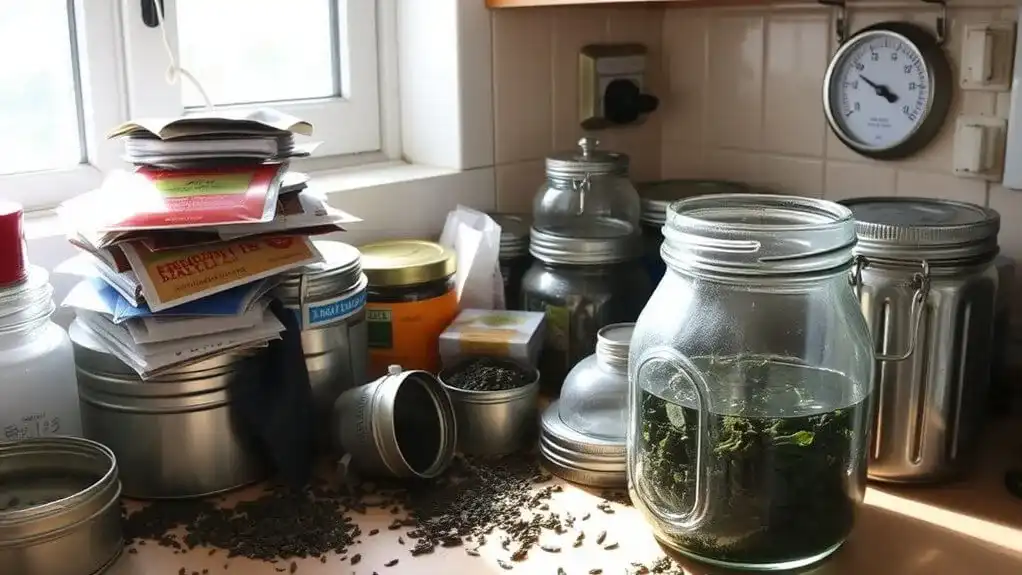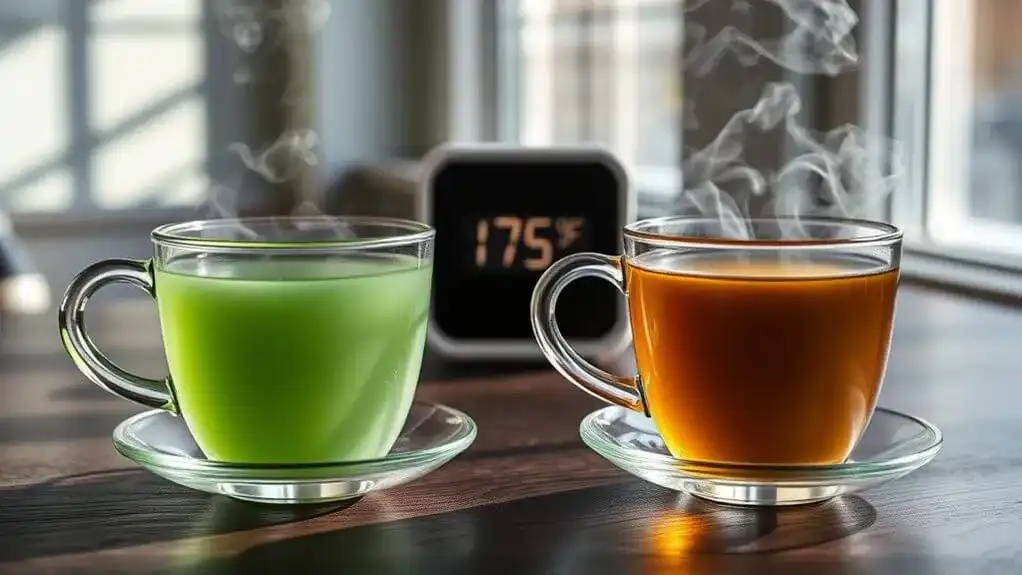Silver Needle white tea's premium price reflects its labor-intensive production and extreme rarity. It takes 5 kilos of hand-picked buds to create just 1 kilo of finished tea, with skilled artisans collecting only 500 grams per day during brief spring harvests. The tea's exclusive cultivation in specific Fujian regions, combined with its delicate processing and distinctive silvery down, creates an exceptionally refined beverage. Tea enthusiasts will discover why this prestigious white tea stands in a class of its own.
Key Points
- Extremely labor-intensive harvesting process requires skilled pickers to collect only 500 grams of fresh buds per day.
- Production ratio of 5:1 means five kilograms of fresh buds yield only one kilogram of finished tea.
- Limited production regions and exclusive use of Da Bai tea variety from aged plants restrict supply.
- Minimal processing and delicate handling requirements demand expert craftsmanship throughout production.
- Market growth and increasing demand for premium organic white tea drive high prices in luxury beverage sector.
The Delicate Art of Silver Needle Tea Production
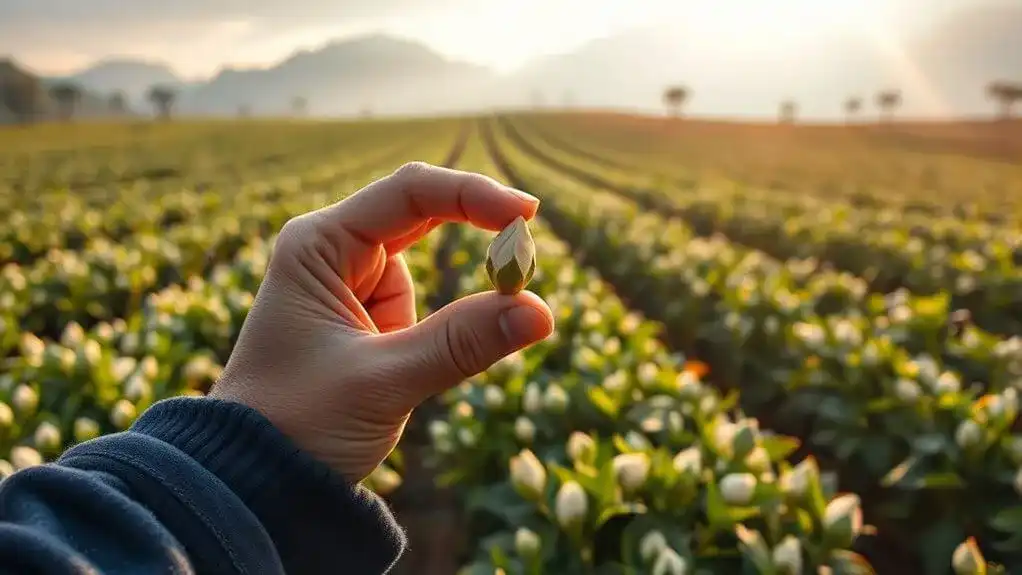
While many teas undergo complex processing methods, Silver Needle white tea stands apart for its remarkably pure and meticulous production process. Local artisans employ specialized harvesting techniques, hand-picking only the youngest, unopened buds during early spring mornings when they're still covered in downy white hair. The demanding process yields only 5 kilos fresh tips for every kilogram of finished tea. Each skilled picker can collect just 500 grams per day due to the delicate nature of harvesting.
The production's next vital phase involves precise withering methods, where tea buds are carefully spread across bamboo trays for extended sun exposure. This gentle process allows natural moisture evaporation while preserving the tea's distinctive character. These pristine buds contain minimal caffeine content, making them an excellent choice for those seeking a gentler tea experience. The buds then undergo careful drying over charcoal or smoldering fire, followed by meticulous hand sorting to guarantee premium quality. It's a labor-intensive journey, requiring over 30,000 buds to produce just one kilogram of this exceptional tea.
Exceptional Quality Standards and Rarity Factors

Because Silver Needle white tea demands the highest quality standards in the industry, its production remains exclusive to specific regions and skilled artisans. The tea's rarity stems from its precise harvesting techniques, where only young buds from the Da Bai tea variety are handpicked during ideal weather conditions. The artisanal process involves traditional sunlight withering to preserve the tea's delicate characteristics. Quality control is paramount throughout the process, from plucking to drying. Moisture levels must be strictly maintained at below 8 percent during production to ensure optimal quality.
The labor-intensive nature of production considerably impacts its availability. Expert tea pickers can only harvest about 250 grams daily, and it takes 5 kg of fresh buds to produce just 1 kg of finished tea. The tea's exceptional character is further enhanced by specific terroir conditions, particularly in Fujian, China, where aged tea plants over 60 years old contribute to its distinguished profile. Master tea producers ensure the buds are harvested on sunny days only, allowing for optimal flavor development. Strict authenticity measures, including careful aging and moisture control, guarantee the tea's premium status.
Understanding Silver Needle's Premium Market Value
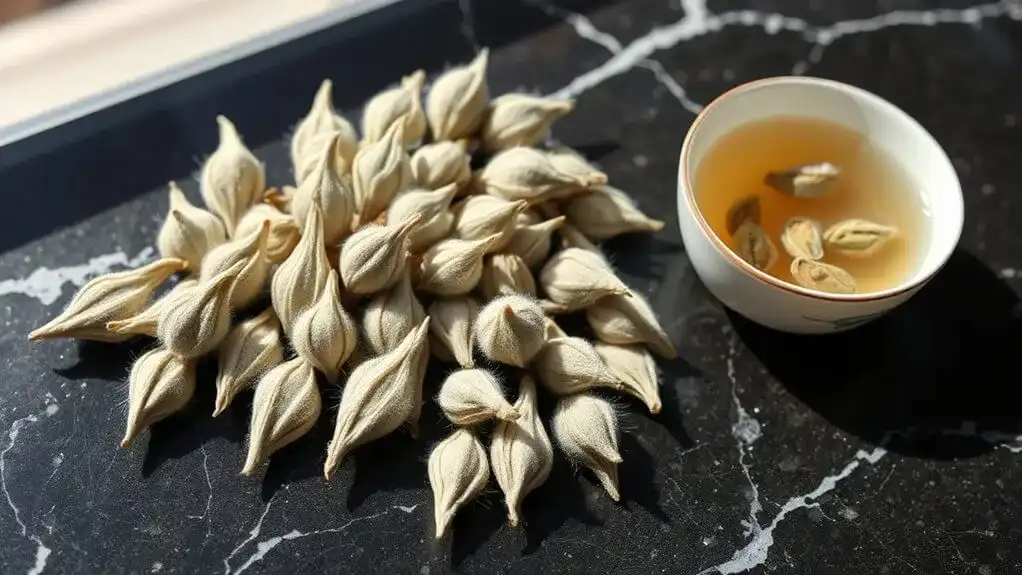
As one of the world's most exclusive teas, Silver Needle commands premium prices due to its labor-intensive cultivation and processing methods. Its market value is driven by limited production capabilities in Fujian province, where specific climate conditions and traditional harvesting techniques restrict annual yield.
Current market dynamics show strong demand growth, with the white tea sector projected to expand at 6.60% CAGR through 2033. Consumer trends indicate increasing appreciation for premium beverages, particularly in the U.S. market, where tea enthusiasts value Silver Needle's historical significance and cultural heritage. Despite economic fluctuations, this luxury tea maintains its premium status due to strict authenticity standards, meticulous quality control, and growing health consciousness among consumers. The combination of rarity, prestige, and minimal processing continues to justify Silver Needle's position in the premium tea market. This aligns with the broader industry trend where organic white tea dominates with an 85.7% market share, reflecting consumers' preference for pure, naturally processed teas.
Distinctive Flavor Profile and Sensory Experience
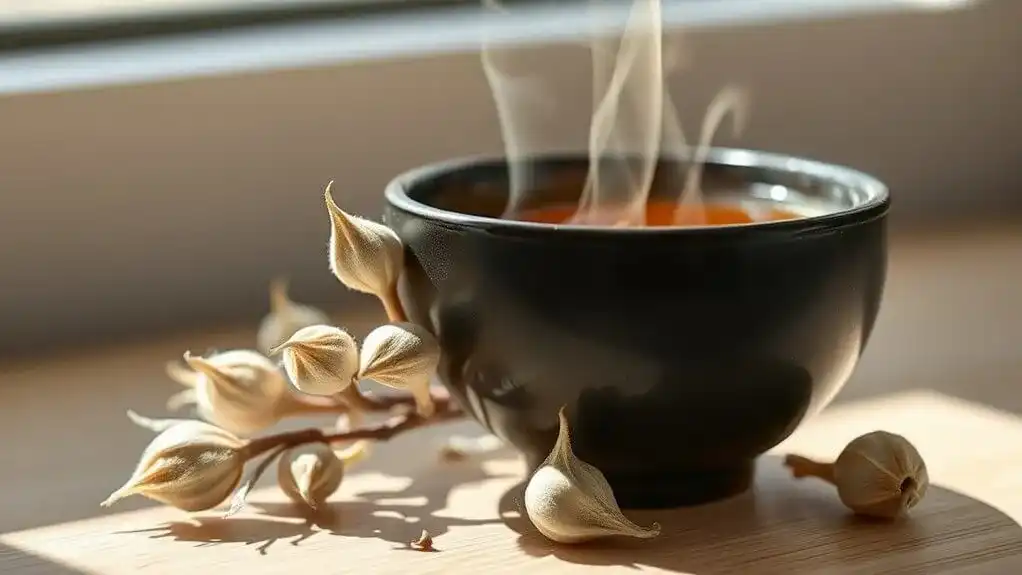
The exquisite flavor profile of Silver Needle white tea offers a sensory journey that begins with delicate floral aromas and evolves into complex layers of taste. With notes of gardenia and orange blossom mingling with honey and fresh hay, this tea delivers a luxurious, sweet syrupy texture that envelops the palate. The 2014 vintage particularly delights with its toasted buttery croissant aroma. The minimally processed nature of this tea, involving only sun drying, helps preserve its delicate and unique characteristics. The tea's premium status is reflected in its careful crafting, using tender new buds picked exclusively during early Spring harvests.
Through gongfu brewing, Silver Needle reveals its full character across multiple infusions, particularly in aged varieties. The flavor evolution showcases smokey, buttery, and sweet characteristics, complemented by summer fruit and melon undertones. The tea's distinctive Hao Xiang, or hair fragrance, becomes more pronounced with age, while its powerful umami notes and crisp tannic structure contribute to its depth. Each steeping unfolds new dimensions of taste, making the sensory journey both enchanting and enduring.
Regional Origins and Cultivar Significance

Original Silver Needle White Tea production thrives in China's Fujian province, particularly around Taimushan Mountain where it first emerged. The tea's production techniques have evolved across two main regions: Fuding and Zhenghe, known respectively for their "North Road" and "South Road" varieties.
At the heart of this prestigious tea's quality lies cultivar selection. The Fuding variety (Da Bai) is prized for its large, plump buds with rich pekoe coating, which directly influences the tea's distinctive character. These specialized buds require meticulous handling during harvest and processing to prevent damage and maintain quality. The characteristic bright clear apricot color of the brewed tea sets it apart from other varieties. While some production has expanded to Yunnan's Mengku and Menghai regions, authentic Silver Needle White Tea remains closely tied to its Fujian origins and the specific Da Bai cultivar, justifying its premium market position. The tea undergoes careful harvesting in early spring only, ensuring the highest quality buds are selected for processing. Skilled artisans employ minimal processing methods to preserve the natural characteristics of the buds, involving only withering and drying steps.
Expert Brewing Techniques for Maximum Enjoyment
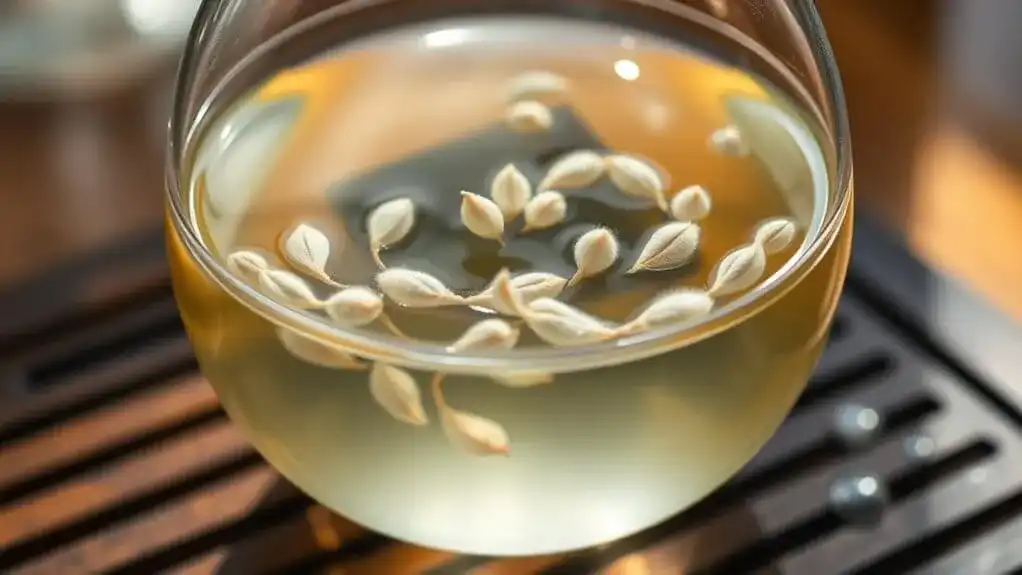
Proper brewing techniques release Silver Needle White Tea's delicate flavors and guarantee an exceptional drinking experience. Expert tea enthusiasts recommend using either red clay teapots or glass teaware, preheated with boiling water. Various brewing methods accommodate different preferences, from traditional Gong Fu style to Western-style steeping times. Weighing the leaves ensures you achieve precise measurements for consistent results. The rare tea's silvery-white down gives each cup a uniquely smooth texture. Since it's the least processed tea variety, Silver Needle requires gentle handling during preparation.
- Use 3g of tea leaves per 150-200ml of water at 80-85°C for best results
- Begin with a quick hot water rinse to prepare the leaves
- For Gong Fu style, use 7g per 110ml, starting with 10-second steeps
- For Western style, steep for 5 minutes at 85°C
Experimentation with steeping times and temperatures helps tea drinkers discover their perfect brew. High-quality water and proper tea leaf quantity guarantee consistent, delicious results with each infusion.
Conclusion
As the saying goes, "perfection comes at a price," and Silver Needle white tea exemplifies this ancient wisdom. This extraordinary tea's delicate processing, strict harvesting standards, and limited production continue to justify its premium position in the tea market. For those seeking the pinnacle of tea craftsmanship, Silver Needle offers an unmatched sensory journey that's well worth the investment in both time and resources.
